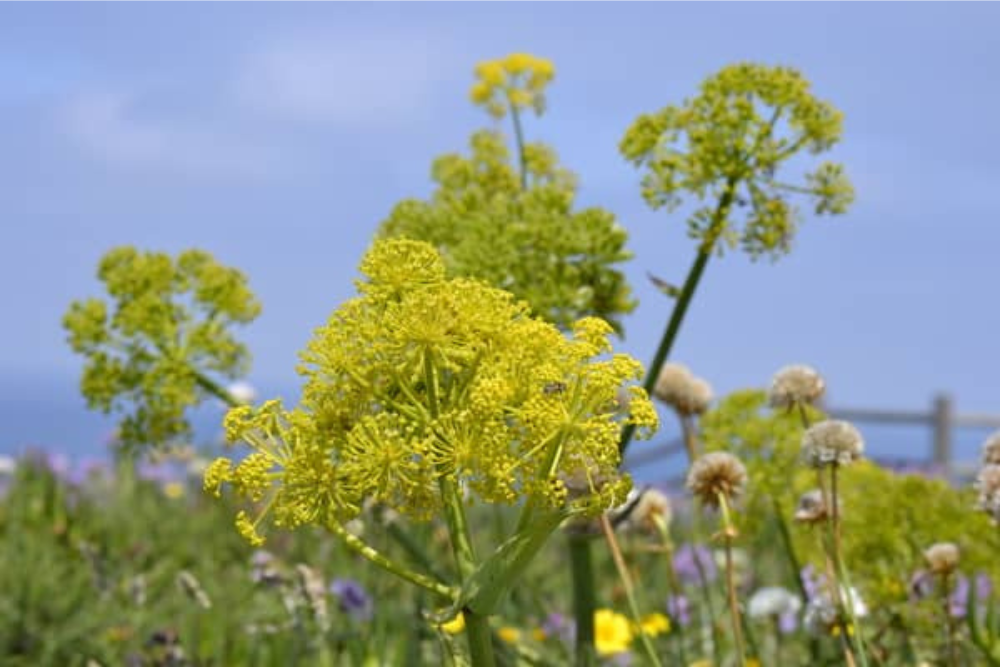The asafoetida plant, also known as Ferula asafoetida, is more than just a pungent spice. Revered in traditional medicine, it holds therapeutic powers that go beyond flavour. Let’s uncover the incredible asafoetida plant benefits you probably didn’t know.
What are the health benefits of the asafoetida plant beyond its culinary use?
Short Answer: The asafoetida plant offers multiple health benefits including digestive support, anti-inflammatory effects, antimicrobial properties, and relief from respiratory and menstrual discomfort.
Long Answer:
- Digestive aid: Asafoetida stimulates bile production and reduces bloating, flatulence, and indigestion.
- Anti-inflammatory: Its compounds help reduce inflammation and joint pain.
- Antimicrobial: Effective against bacteria and fungi, it can support immune health.
- Respiratory relief: Traditionally used to ease asthma, bronchitis, and coughs.
- Hormonal balance: May help regulate menstrual cycles and reduce cramps.
Is asafoetida effective as a natural remedy for respiratory or menstrual issues?
Short Answer: Yes, asafoetida is traditionally used in Ayurveda to relieve respiratory issues and menstrual discomfort due to its anti-spasmodic and expectorant properties.
Long Answer:
- For respiratory issues: Asafoetida acts as a natural expectorant, helping loosen mucus and ease breathing difficulties in asthma and bronchitis.
- Anti-viral action: It may help the body resist common colds and respiratory infections.
- Menstrual pain relief: The antispasmodic nature of asafoetida helps relax uterine muscles, reducing period cramps.
- Cycle regulation: Asafoetida is believed to support hormonal balance in women, potentially aiding irregular periods.
- Boosts circulation: It improves blood flow, which may also support reproductive wellness.
Can I use hing in its raw plant form, or is the powdered resin the only option available?
Short Answer: While the raw plant form exists, asafoetida is typically used as a dried gum or powder due to its strong taste and potency. The powdered resin is safer and easier for culinary and medicinal use.
Long Answer:
- Raw form limitations: The raw sap or resin from the plant is extremely pungent and not suitable for direct consumption.
- Dry resin form: Collected from the plant root and dried, this resin is the traditional base form used in Ayurveda.
- Powdered form: The most common commercial option; it’s usually mixed with rice flour or gum Arabic for ease of use.
- Practicality: Powdered hing is safer, stable, and easier to dose for both cooking and health benefits.
- Usage caution: Raw resin can be toxic in high doses and should not be used without proper processing.
How does the asafoetida plant compare to other herbal ingredients in supporting digestion?
Short Answer: Asafoetida is among the most potent natural digestive aids and compares well with herbs like ajwain, fennel, and ginger due to its strong carminative and anti-flatulent properties.
Long Answer:
Here’s a table comparing asafoetida with other popular digestive herbs:
| Herb | Key Digestive Benefits | Unique Feature |
|---|---|---|
| Asafoetida (Hing) | Reduces gas, bloating, indigestion | Strong anti-flatulent and bile stimulant |
| Ajwain | Improves digestion, relieves acidity | High in thymol—anti-bacterial & anti-acid |
| Fennel Seeds | Soothes the stomach, reduces cramps | Mild and cooling; safe for all ages |
| Ginger | Boosts digestion, fights nausea | Stimulates gastric enzymes and motility |
As seen above, while each herb has its strengths, asafoetida stands out for intense bloating relief and deep digestive stimulation.
Are there any side effects or precautions I should know before using asafoetida therapeutically?
Short Answer: Yes, asafoetida should be used in moderation. Overuse or raw use may cause side effects like nausea or irritation, especially in children or during pregnancy.
Long Answer:
- Pregnancy caution: Asafoetida may act as a uterine stimulant and is generally advised to be avoided during pregnancy.
- Infant use: Not suitable for infants under 1 year of age due to potency.
- High doses: May lead to nausea, burping, or even headaches.
- Allergic reactions: Rare but possible; symptoms can include skin rash or respiratory irritation.
- Drug interactions: It may interfere with blood-thinning or antihypertensive medications—consult your doctor if on medication.
Conclusion: Should You Include Asafoetida in Your Wellness Routine?
Short Answer: Yes, asafoetida offers powerful benefits when used correctly—supporting digestion, immunity, and hormonal health naturally.
Long Answer:
- Holistic wellness: Asafoetida is not just a spice but a time-tested natural remedy with broad health applications.
- Daily use in small doses: Incorporating hing in your food or herbal preparations can help prevent digestive and respiratory discomfort.
- Trust traditional wisdom: Its long-standing use in Ayurveda and Unani systems backs its safety and efficacy.
- Brand you can trust: At Hingwala, we ensure premium-quality hing products that retain the plant’s original potency.
- Final tip: Always consult a healthcare provider if you plan to use it therapeutically, especially if pregnant or on medication.





